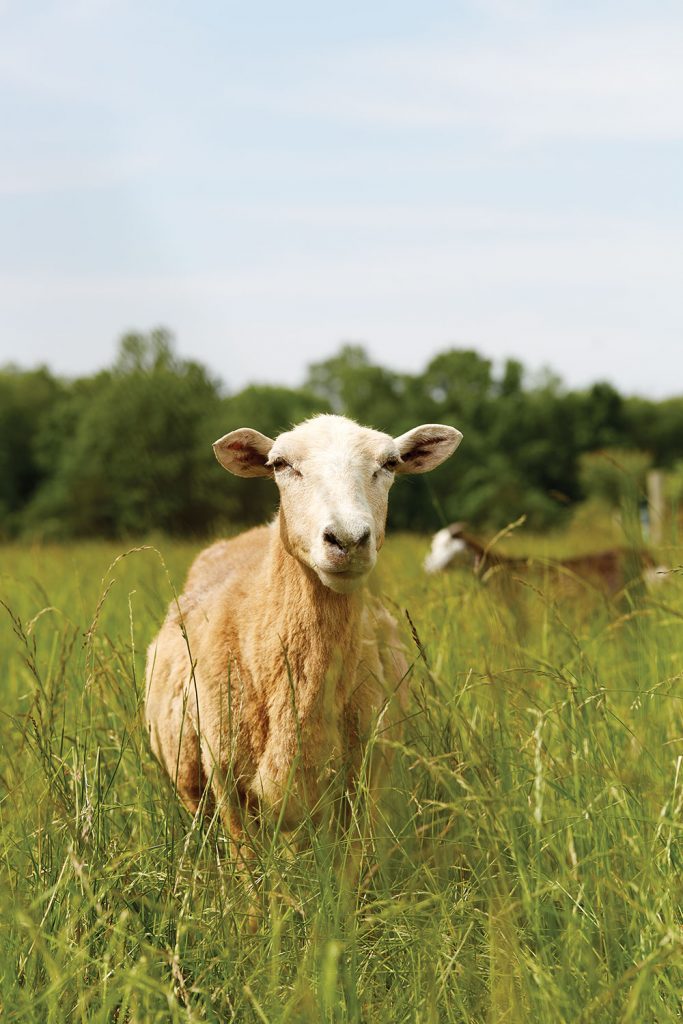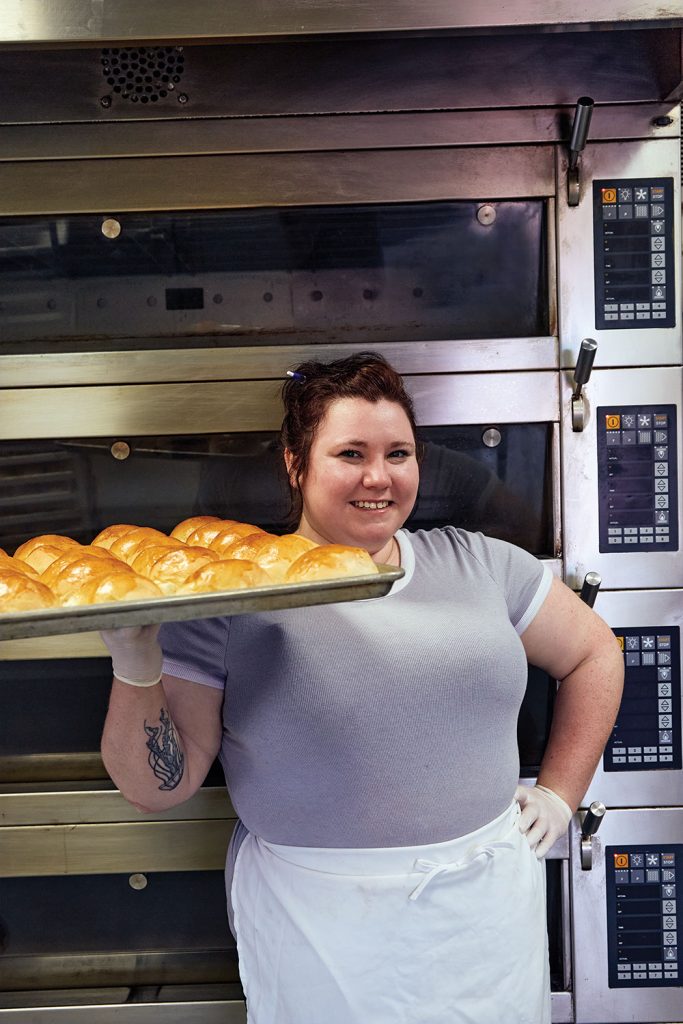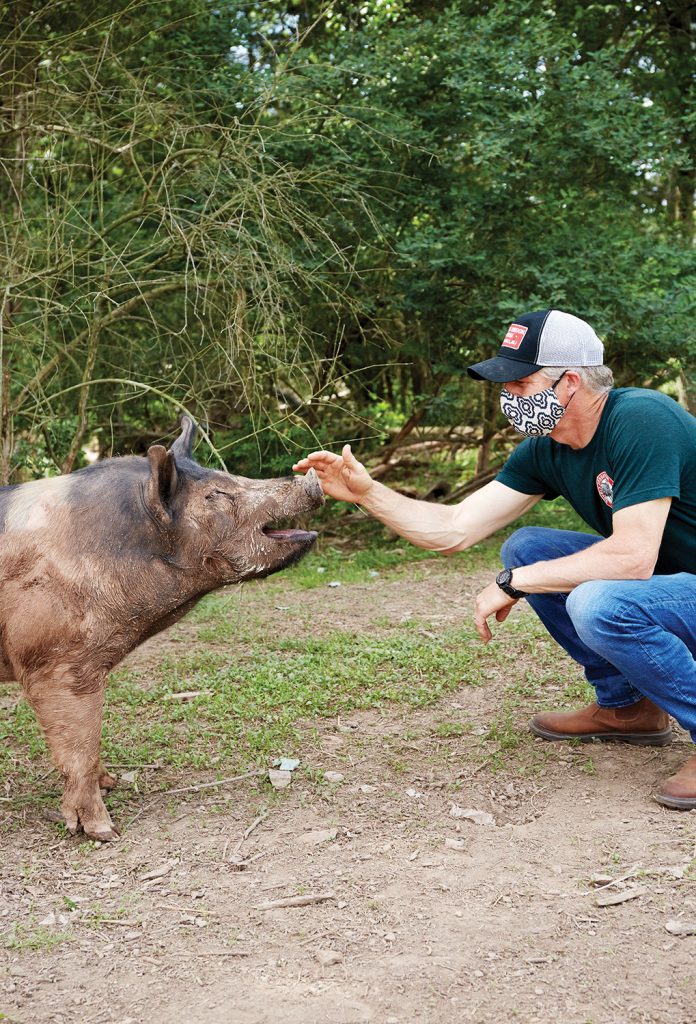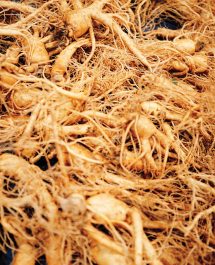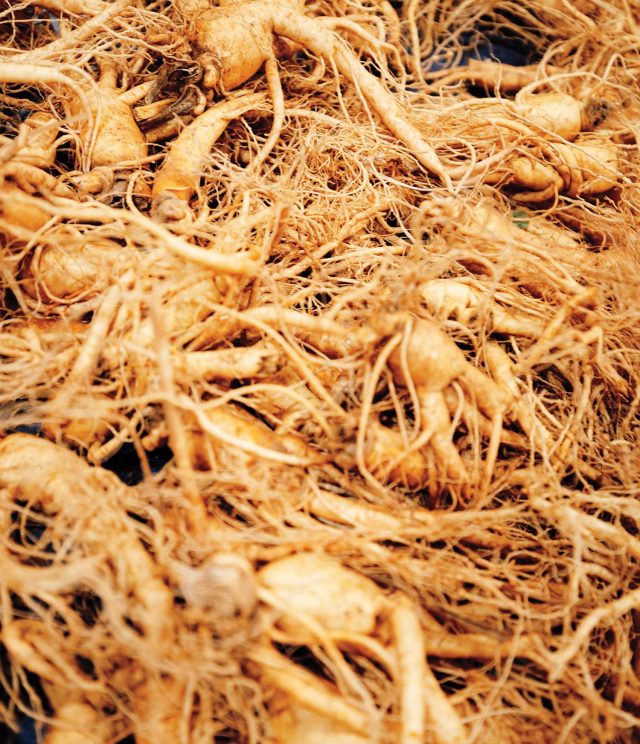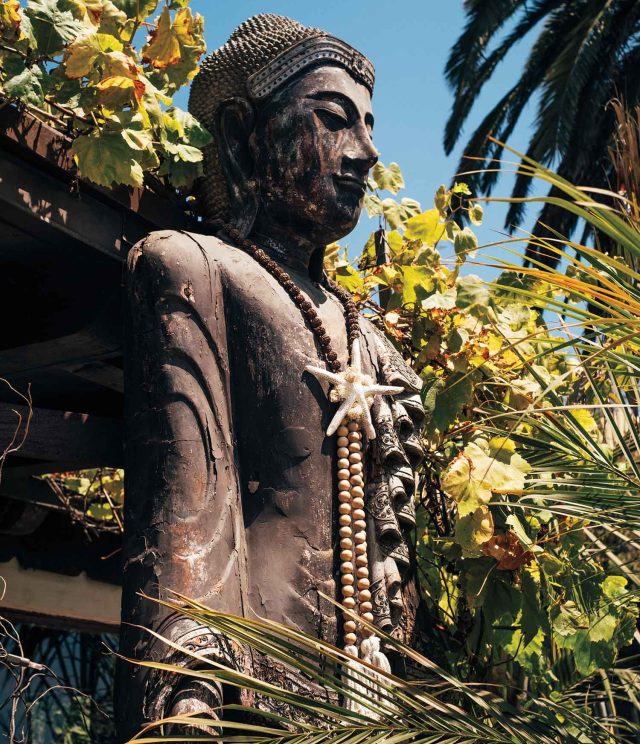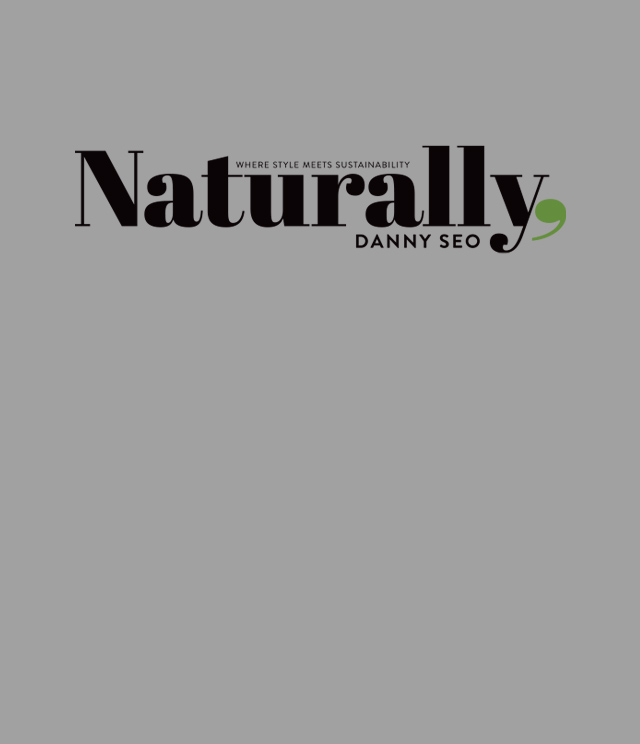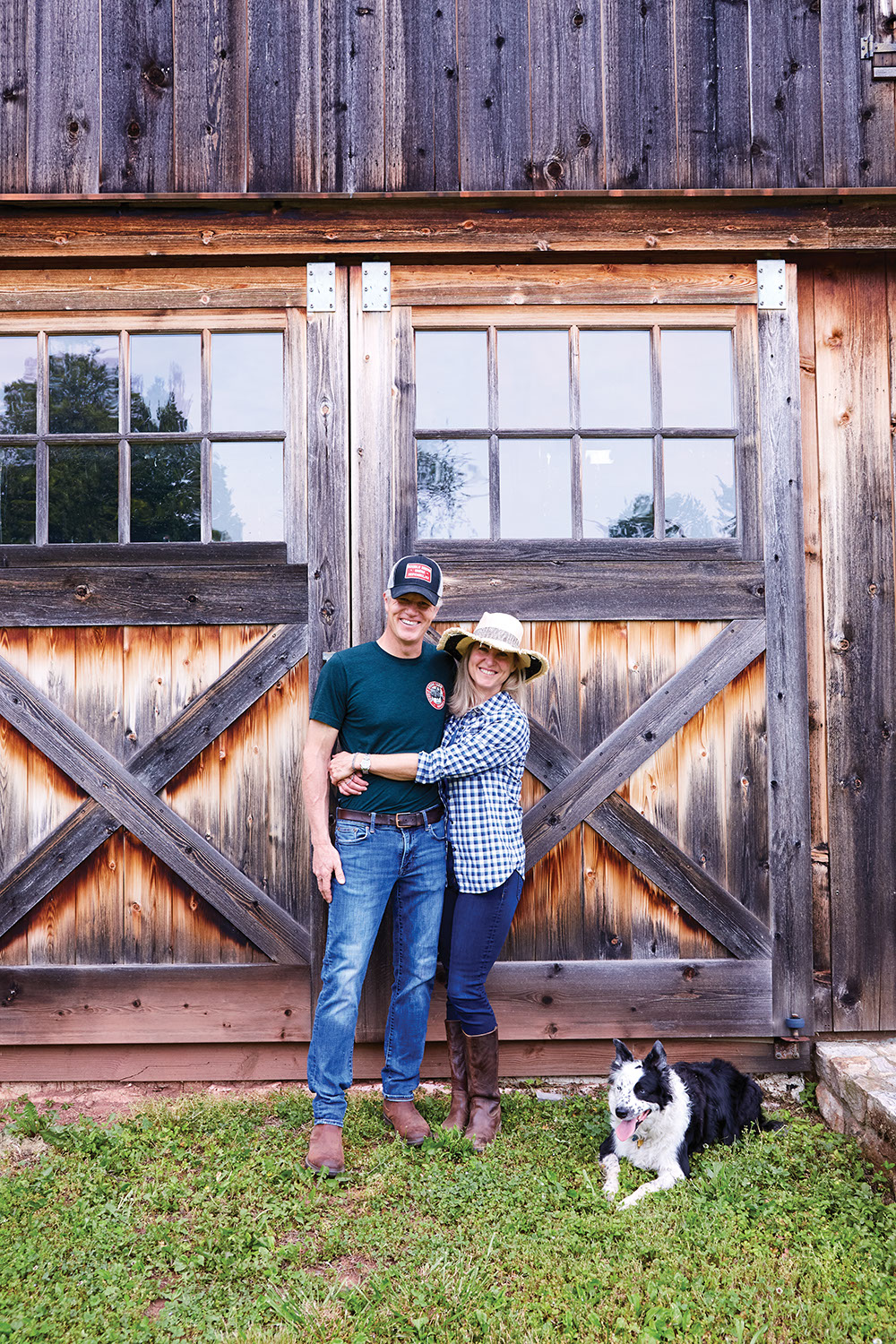 Former city dwellers, Jon and Robin McConaughy, enjoying country life with their buddy, Blueberry.
Former city dwellers, Jon and Robin McConaughy, enjoying country life with their buddy, Blueberry. STORY BY SANDRA S. SORIA ✷ PHOTOGRAPHS BY DAVID ENGELHARDT
For Jon and Robin McConaughy, the pivot happened one Sunday in 2002, when reading the New York Times Magazine. Robin was devouring the article “Power Steer” by Michael Pollan, who later went on to author the landmark book, The Omnivore’s Dilemma. “It just really grossed me out,” she says. “I was so disgusted. He basically purchases a commodity beef steer and just chronicles its life, the way it’s given all these hormones and antibiotics, how it’s confined and raised, and even its personality. So, I gave it to Jon and said you have to read this. You’ll never eat meat again.”
The groundbreaking book really did get credit for kicking off a wave of awareness and even vegetarianism. For this city-based, corporate-bound couple—he a financier and she a headhunter—it didn’t spoil their appetite for meat, but it did prompt the purchase of a country property with enough space to humanely raise an orphan cow and a little menagerie. “We thought it would be great to just be able to raise some animals so our kids knew where their food came from,” Robin says, “but also so we could feel really good about eating meat. Because we both like to eat meat and we wanted to eat the best possible meat.”
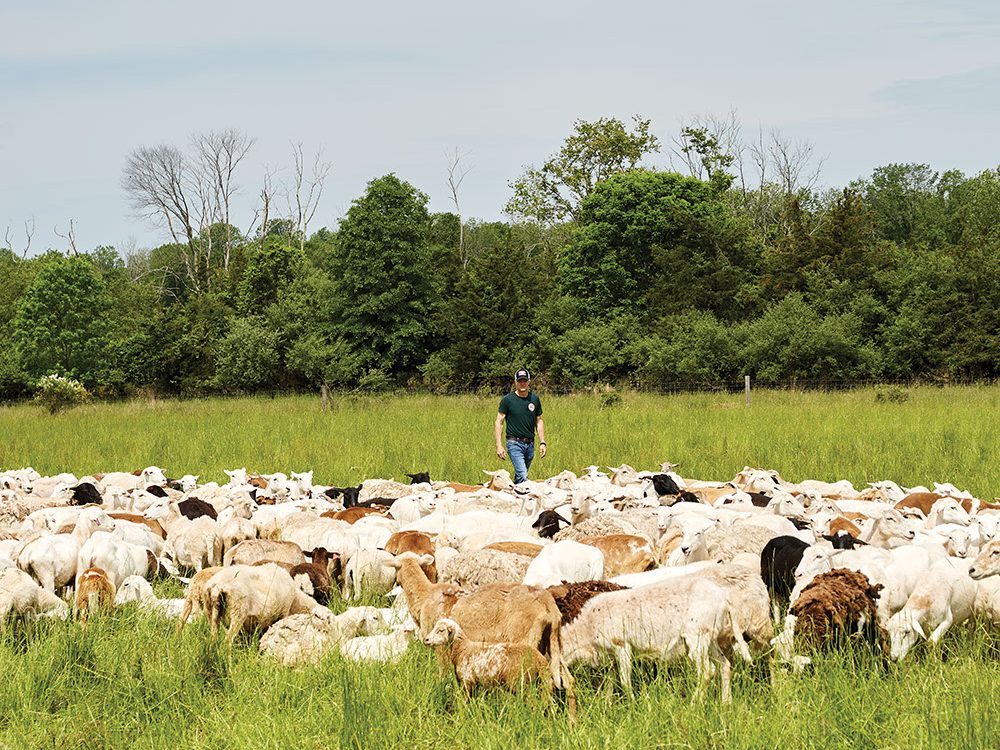
Jon tends to a flock of 500 Katahdin sheep. All of the animals are rotated around 800 acres to benefit both animal and land.
One cow has become a whole herd, and the barnyard menagerie has morphed into thousands of turkeys, chickens, ducks, sheep, and pigs, pasture-raised on hundreds of acres on their Double Brook Farm in a town named (perhaps presciently) Hopewell, New Jersey. The farm operation has spawned their Brick Farm Market, where they sell meat, dairy, and vegetables—raised organically in a 20-acre plot—along with a butchery, a bakery, and more. They also operate Brick Farm Tavern, an 1812 farmhouse turned restaurant. It’s a closed-loop food system in which the retail and restaurant uses 98 percent of what is grown, and waste is plowed back into the farm operation. Products sold that aren’t produced on the farm come from mostly local, but always like-minded, growers and producers.
Far from being stuffed into feedlots, the animals are rotated throughout the 800 acres they farm. This practice improves the land and gives the animals a happy, healthy life before they are humanely slaughtered in an on-site facility—one of only two on-farm processors in the country, according to Robin. Noted animal behaviorist and advocate, Temple Grandin, inspired then later visited the facility, attesting to its high standards for minimal-stress slaughter. “This is incredibly important to us,” Robin says. “It’s totally quiet in there. There’s no music. There are no loud noises. There’s no hot stick. Nothing like that. If they startle in the chute, then they just get backed out and we’ll take another animal first. To us, it feels like the most important part of what we do.”
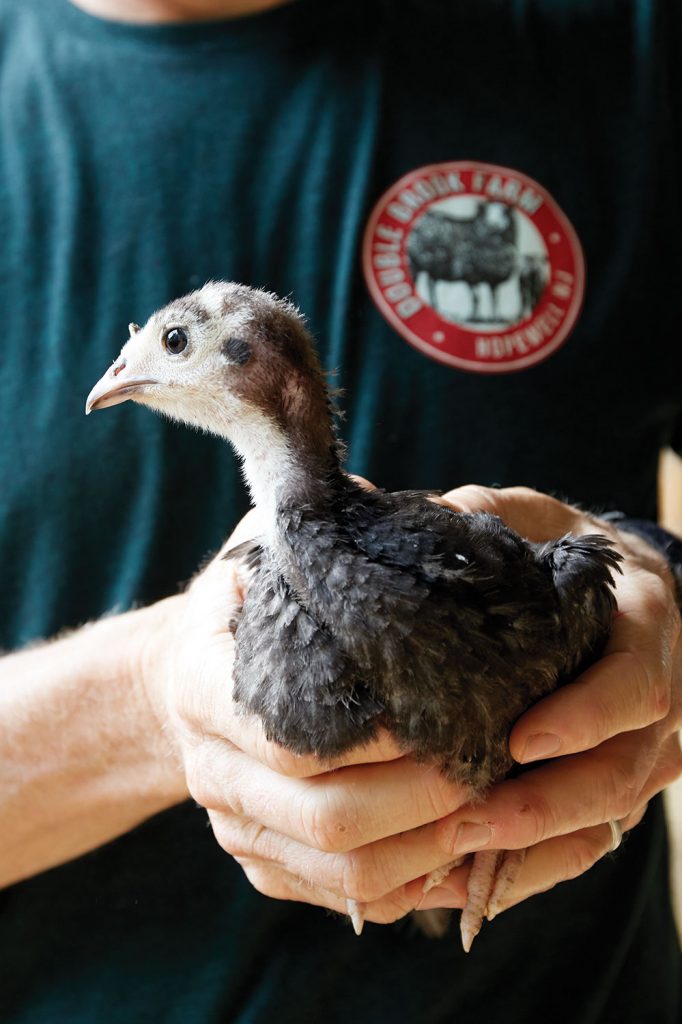
About 3,000 turkeys were hatched at Double Brook Farm this year, each one a miracle to farmer Jon. Modern solar panels meet classic cupola, both designed to capture light. 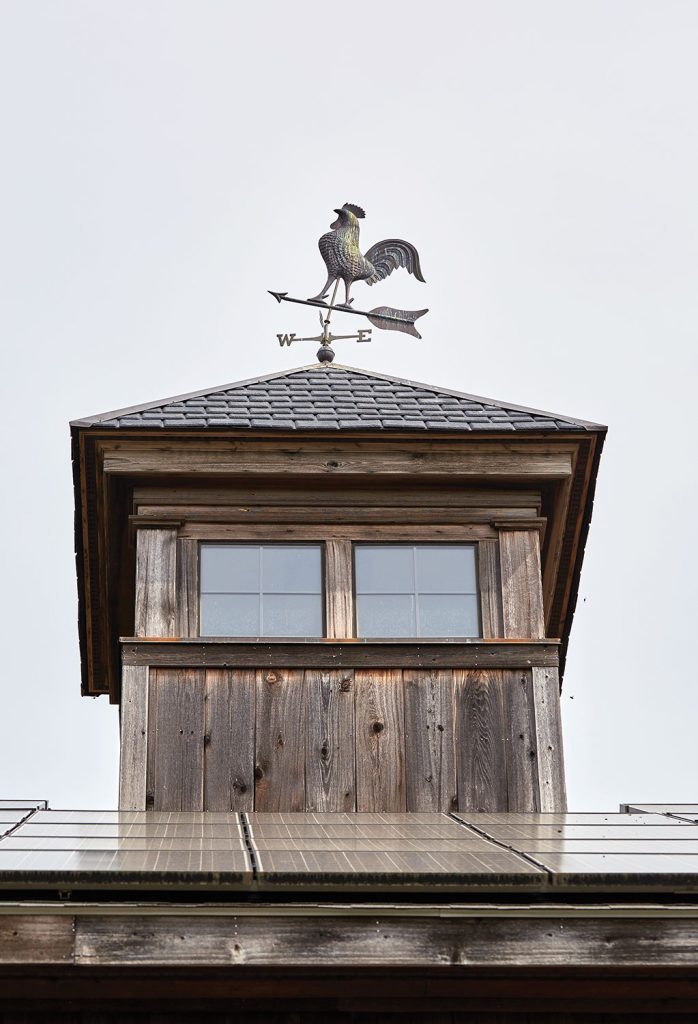
Given that disgust for commodity food production started their seismic life switch, it’s not surprising the couple is laser-focused on humane animal harvesting. Talking to them also answers an obvious question for omnivores who try hard to remain in denial that the shrink-wrapped pink stuff in the deli case was an actual animal: How do you eat what you raise? “We got into farming because we love animals. So, it is ironic that the majority of the animals that we raise we’re raising for consumption,” says Jon, who left finance for full-time farming in 2011. “That’s why it’s even more important to me that we do what we do. So rather than those animals be raised in confinement somewhere else and have a miserable life, we want them to have the best life possible.”
Like Pollan’s research almost 20 years ago, the global pandemic has laid bare the fact that commodity animal farming and production is a dirty business. Spikes of Covid-19 cases in and around meatpacking plants put the spotlight on companies that don’t value worker health and safety or, it seems, the cleanliness of their facilities. And, as Jon reminds us: “The number one polluter in the United States is industrial animal farming. So, confinement operations are probably the worst thing that we have in the United States for our environment. The best thing, in my opinion, for our environment is a pasture-based system so that farming goes from being a polluter to a cleaner.”
The pandemic also revealed other benefits to a localized farm-to-table operation, where supply and demand can be readily recalibrated. “That always was the idea, that the size of the farm and the production of the farm would be based upon the demand from our outlets,” Jon says. “And it matches up pretty well. When the pandemic hit, obviously the restaurant went to zero, but there was a surge from the grocery side of things. And one of the things we haven’t experienced is a disruption in the food chain because we have our own animals and slaughterhouse.”
Keeping that balance just right is one of the reasons Jon and Robin resist the idea of building on their success. Their operation employs 100 people at a living wage. (As of this writing, 95 percent of the employees furloughed during the pandemic have been called back.) Besides, big growth means turning into the very thing they’ve railed against from the beginning. “There never was this idea that if we were successful we would grow bigger and bigger and bigger,” Jon says. “Really, I think the solution for our broken food system—and it’s very broken—is local production. It’s better to have 1,000 different localized food systems than it is to have one big centralized one, and for many, many, many different reasons.”
One reason might be that other would-be farmers who, like the McConaughys, are able to find and feed a desire to be a part of the solution, instead of the problem—and to find a deeply satisfying way of life. “In the financial world,” Jon says, “at the end of the day there wasn’t anything that you could touch or feel or point at—other than maybe count how much money you’ve made—and say, This is what I did today. It’s fascinating to me that you can plant a seed and from that, you get all this substance. We hatched out 3,000 turkeys this year, but each one is just a miracle to me.”



